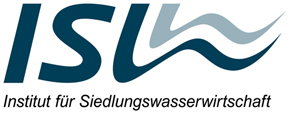
Samir Naser Hag Irahim
Structure, Function and Formation of Anaerobic Granular Sludge
Abstract
Sludge granulation is one of the recent advances that have been introduced into the field of anaerobic wastewater treatment. The phenomenon of sludge granulation was first observed in wastewater treatment systems more than 20 years ago and since that time a number of wastewater treatment systems - especially for anaerobic wastewater treatment- have been developed. Upflow anaerobic sludge blanket (UASB) reactors are regarded as pioneer systems that were developed based on the principle of sludge granulation for anaerobic wastewater treatment purposes. Granular sludge is the main prominent characteristic of UASB reactors as compared to other traditional anaerobic technologies. In an UASB reactor, anaerobic microorganisms can form granules through self-immobilization of bacterial cells. The performance of the UASB system is strongly improved by the formation of effective granular sludge. However, driving forces for granule sludge development and stability are not well understood. There are a number of theories that explain anaerobic granular sludge formation mechanisms and most of these mechanisms interact somehow. Accordingly, many factors can affect granule formation and different types of granules may form with different characteristics.
The current study deals with understanding the role of the physicochemical and the microbiological properties in determining the overall granular sludge physical structure. The physicochemical and physical characteristics of already formed anaerobic granular sludges - collected from different full-scale anaerobic reactors and treating industrial wastewaters - were investigated to get a better insight on the major structural properties of anaerobic granular sludge. In addition, the microbial communities of collected granular sludges were investigated using molecular tools - PCR-DGGE fingerprinting technique - to characterize major microbial phylogenetic groups. Based on the information collected from physical and microbial characterization, a new method was developed to enhance anaerobic granular sludge formation in lab-scale UASB reactors. The formed granular sludge was analyzed physically and also microbiologically.
Seven anaerobic granular sludge samples were collected from full-scale anaerobic reactors treating different types of industrial wastewaters (paper mill, brewery, milk and juice). The sludge samples were investigated in terms of physicochemical characteristics, microbiological properties and the involvement of different cohesive forces for stabilizing the granule structure.
According to Principal Component Analysis (PCA), the physical and physicochemical characteristics of granular sludges are wastewater type-dependent. Granular sludges treating similar types of wastewater were found to have a close correlation. Anaerobic granular sludge originating from anaerobic reactors treating paper mill wastewater effluents showed most of the desired properties. Based on the redundancy analysis (RDA), more than 30% of the variations in granular sludge bulk properties were found to be correlated with the variation in wastewater characteristics. For the physicochemical properties (EPS and surface characteris-tics), 90% of the variations in sludge properties were related to the composition of extracellular polymeric substances and sludge surface characteristics.
The role of different cohesive forces (namely electrostatic interactions, ionic interactions and hydrogen bonds) involved in stabilizing and shaping anaerobic granular sludge were investigated. The PCA analysis revealed that the cohesive forces involved in anaerobic granular sludge stability are wastewater type-dependent. Besides, the stability of granular sludges originating from similar types of wastewater was governed by similar cohesive forces. The granular sludge from paper mill wastewater effluents showed the highest stability compared with the other sludges investigated. The stability of these granules was mainly governed by ionic interactions. Moreover, the availability of cations, ionic interactions were found to correlate to the concentration of extracellular polymeric substances.
The microbial community structure of six different phylogenetic groups (Bacteria, Archaea, Betaproteobacteria, Alphaproteobacteria, Actinobacteria and Pseudomonas) in the various granules was investigated using PCR-DGGE fingerprinting technique. The microbial community structure analysis of the different granules revealed a significant difference (p<0.05), even for granular sludges originating from similar types of wastewater. No correlation between the different microbial communities and the sludge properties was observed. This would indicate that the microbial community structure has less influence on the sludge structural properties compared with physicochemical interactions, which would suggest that the granulation process is a community function and is not depending on a specific microbial group.
Based on the previous information, a Combined Acidification-Ca2+ addition (CAC) method was developed and used as a method to enhance the granulation process. The new CAC method demonstrated the ability to enhance anaerobic granular sludge formation within 11 days in a lab scale UASB reactor. Sludge acidification resulted in an increase in the amount of EPS available for Ca2+ binding. An improvement in the sludge settling characteristics and surface properties was observed favoring sludge aggregation. Investigating the microbial community structure using DGGE analysis revealed that the proposed method did not alter the microbial community structure and/or dynamics.
This would suggest that the enhancement of anaerobic granular sludge formation can be achieved by modifying physiochemical properties of the sludge regardless of the initial microbial community available.
Vacancies of TU Braunschweig
Career Service' Job Exchange
Merchandising
Term Dates
Courses
Degree Programmes
Information for Freshman
TUCard
Technische Universität Braunschweig
Universitätsplatz 2
38106 Braunschweig
P. O. Box: 38092 Braunschweig
GERMANY
Phone: +49 (0) 531 391-0
